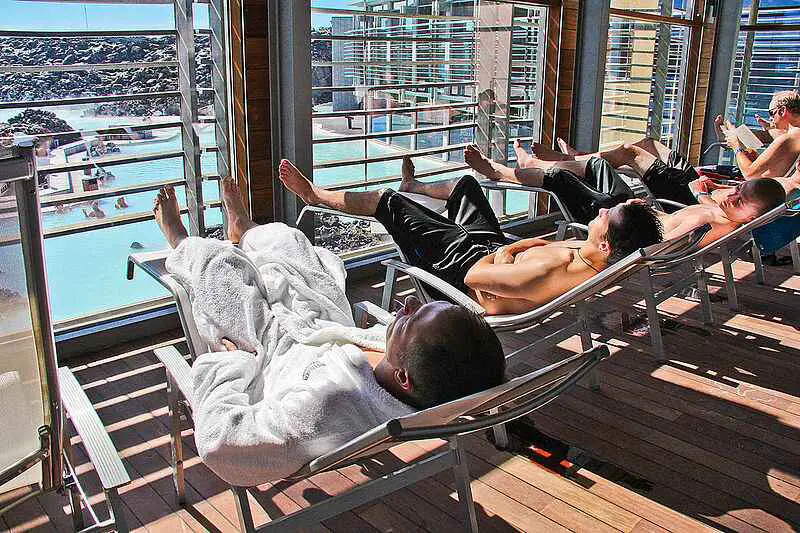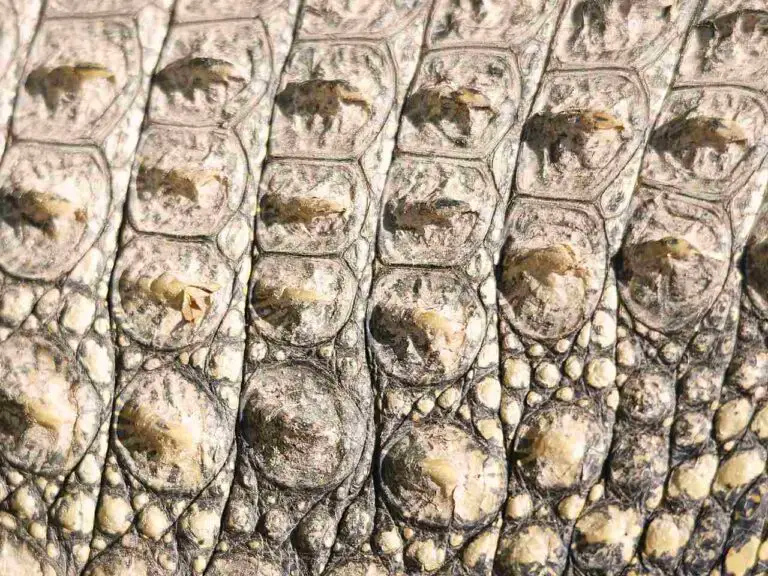5 Passive Solar Heating Examples and Characteristics Explained
Passive solar heating examples are; sunroom space heating by direct gain, passive water heating in exposed reservoir, solar greenhouse warming, thermal mass-absorption using Trombe wall, and indirect solar heat gain in solarium.
This article discusses passive solar heating examples and characteristics, as follows;
1). Sunroom Space-Heating by Direct Gain (as one of the Passive Solar Heating Examples)
A sunroom is an enclosed space surrounded by multiple and/or large apertures like windows, for maximum sunlight entry [6].
In sunrooms, solar thermal energy is used passively for space-heating, by allowing large amount of electromagnetic radiation from the Sun (especially infrared radiation) to increase the thermal energy of air within the enclosure. This direct entry and heating of air is otherwise referred to as direct gain (of solar thermal energy).
Methods of passive solar heat gain are; direct, indirect, and isolated gains respectively. Non-direct forms of solar gain occur when there is an intervening medium for thermal energy storage and release or deflection.
A sunroom is an example of direct gain-passive solar heating systems; and it may also be used for indirect or isolated gain when equipped with heat-absorbent components.
For a sunroom to perform optimally in passive solar heating, there are multiple conditions that must be favorable. These include climate, geographic location, elevation, and architectural design.
Apertures of the sunroom must be positioned for optimal solar capture, and the most suitable orientation for such optimal capture is southward [2].
Insulation can be provided in the form of double-glazing on windows, in order for heat gained to be locked-in and conserved as needed.
2). Passive Water Heating in Exposed Reservoir
Passive water heating is the use of solar infrared radiation to raise the temperature of water in a vessel, without any form of mechanical circulation or pumping of the fluid.
A passive solar water heating system is a system comprised only of water in a reservoir that is designed to capture significant amount of solar thermal energy, in the absence of any moving parts.
In order for a passive solar water heater to function optimally, it is often necessary for the storage tank to be made from heat-absorbent material, which could also be transparent to increase solar penetration.
The tank is also usually insulated to minimize heat losses when external solar radiation is low or absent.
Types of thermal energy transfer that occur in passive solar water heaters include; conduction, convection and radiation. Convection is particularly important for distributing solar heat in the storage tank [4], through a cyclic natural mechanism that is driven by differences in density/buoyancy of warm and cool water masses.
Because they are not equipped with pumps, removal of water from the storage tank of a passive water heating system may rely on gravity-flow. Inclusion of pumps for water circulation or distribution converts the system to an active solar water heater.
3). Solar Greenhouse Warming (as one of the Passive Solar Heating Examples)
Passive solar heating for a greenhouse is the practice and process whereby solar radiation is used to provide the warmth required for optimal organic metabolism of plants and soil organisms (or other plant-related groups).
A passive solar greenhouse is designed to save cost of energy by relying on solar radiation for both light (during the day) and heat, in place of other energy resources that may increase cost or environmental impact.
In these greenhouses, transparent walls and multiple apertures can help with achieving maximum solar capture in the day.
Materials with high thermal mass can be installed in greenhouses for thermal energy storage, so that these materials may release their stored heat at night when temperatures are likely to drop [7].
Insulation can be provided to minimize excessive daytime heating, or nighttime heat loss.

Passive Solar Heating Examples: Framework of Solar Greenhouse with Bricks for Heat Retention (Credit: Juan Gimeno Ramallo 2019 .CC BY-SA 4.0.)
4). Thermal Mass-Absorption using Tombre Wall
The Trombe wall-method of passive solar space heating is simply the use of a heat-absorbent vertical wall component to as an energy storage medium to retain heat from solar radiation, for later use.
A Trombe wall usually has a high thermal mass; which is a measure of the heat-retention capacity of a material, per unit mass.
It (Trombe wall) can be used in any building or structure where passive solar energy is being exploited, including sunrooms, solariums and passive solar homes.
Trombe walls use indirect gain to manage solar energy in a given environment; which means that they serve as an intervening medium between direct solar radiation and the target medium of heating.
Solar thermal energy that enters into a space where a high-thermal mass Trombe wall is installed; will be absorbed in large quantity by this wall; and subsequently released into the space; so that solar radiation does not interact directly or solely with the space itself.
An advantage of using high-thermal mass materials is their ability to absorb and retain immense amounts of heat, as well as to release this heat at a slow, controlled rate [5]. This mechanism makes passive solar heating an energy-efficient process by increasing storage and minimizing losses, thereby making a given space more comfortable through temperature-regulation (excessive heat is stored in the day, and released at night when temperatures may have fallen).
In summer, the Trombe wall can be used for passive cooling, by regulating its heat-retention so that it serves as a solar chimney, which absorbs and removes excess interior heat [3].

5). Indirect Solar Heat-Gain in Solarium (as one of the Passive Solar Heating Examples)
The main idea behind indirect gain in passive solar heating is to capture and retain solar thermal energy in a medium separate from the living space or water reservoir that requires heat, so that stored thermal energy may subsequently be delivered to them.
Set-ups that are used for indirect passive solar gain include water walls, Trombe wall and solarium [1].
A solarium is an enclosed space with high degree of exposure to solar radiation, which is often used for photo-therapeutic purposes.
Indirect solar heat-gain by passive method in a solarium is possible due to the presence of heat-absorbent materials in components like floors and windows. These components are capable of storing solar heat within the enclosure, thereby increasing the effectiveness of the entire system.

Conclusion
Passive solar heating examples are;
1. Sunroom Space-Heating by Direct Gain
2. Passive Water Heating in Exposed Reservoir
3. Solar Greenhouse Warming
4. Thermal Mass-Absorption using Tombre Wall
5. Indirect Solar Heat-Gain in Solarium
References
1). Bansal, N. K.; Thomas, P. C. (1991). "A simple procedure for selection and sizing of indirect passive solar heating systems." Building and Environment, Volume 26, Issue 4, 1991, Pages 381-387. Available at: https://doi.org/10.1016/0360-1323(91)90064-I. (Accessed 23 April 2023).
2). Chel, A.; Kaushik, G. (2017). "Renewable energy technologies for sustainable development of energy efficient building." AEJ - Alexandria Engineering Journal 57(2). Available at: https://doi.org/10.1016/j.aej.2017.02.027. (Accessed 23 April 2023).
3). Dabaieh, M.; Elbably, A. (2015). "Ventilated Trombe wall as a passive solar heating and cooling retrofitting approach; a low-tech design for off-grid settlements in semi-arid climates." Solar Energy 122:820-833. Available at: https://doi.org/10.1016/j.solener.2015.10.005. (Accessed 22 April 2023).
4). Lad, P.; Saxena, R.; Patel, J. (2021). "Study on PCM Assisted Constant Temperature Water Heating System." IOP Conference Series Materials Science and Engineering 1146(1):012025. Available at: https://doi.org/10.1088/1757-899X/1146/1/012025. (Accessed 23 April 2023).
5). Sharma, P.; Agarwal, N. (2016). "Passive Solar Technique Using Trombe Wall - A Sustainable Approach." 3rd National Conference on Advances in Engineering, Technology and Management, MMU Mullana, Ambala, Haryana. Available at: https://www.semanticscholar.org/paper/Passive-Solar-Technique-Using-Trombe-Wall-A-Sharma/bf0543fc472309e20756809f781a535124f14c1b. (Accessed 23 April 2023).
6). Sugano, S.; Yamaguchi, S.; Tsuneoka, Y.; Oki, R.; Nakagawa, J.; Watanabe, N.; Kobayashi, T.; Tanabe, S-i.; Akimoro, T. (2019). "A Renovation Proposal for Zero-Energy Houses: Outline of Building Planning and Evaluation of Thermal Environment." E3S Web of Conferences 111:04001. Available at: https://doi.org/10.1051/e3sconf/201911104001. (Accessed 23 April 2023).
7). Weiwei, X.; Huiqing, G.; Chengwei, M. (2022). "An active solar water wall for passive solar greenhouse heating." Applied Energy, Elsevier, vol. 308(C). Available at: https://ideas.repec.org/a/eee/appene/v308y2022ics0306261921015324.html. (Accessed 22 April 2023).





